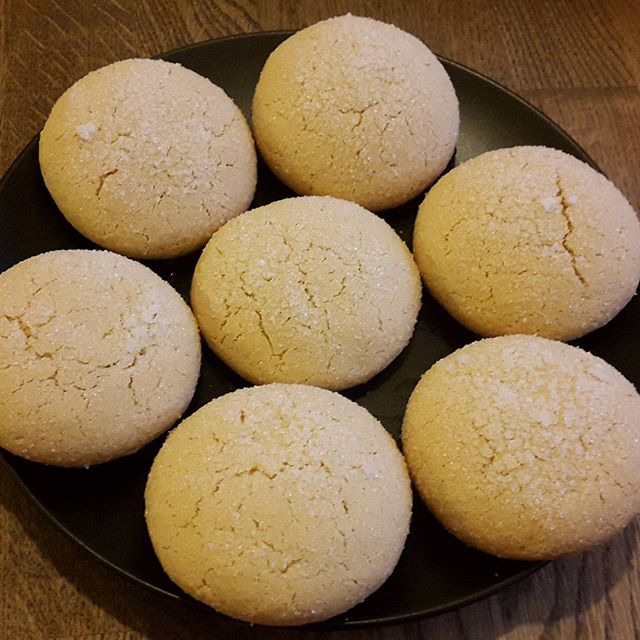INGREDIENTS
- 1 gallon milk
- 1/2 to 1 cup nonfat dry milk powder (optional)
- 1/2 cup plain yogurt with live and active cultures (look at the ingredient list to make sure it includes Lactobacillus bulgaricus and Streptococcus thermophilus)
- Fruit syrup, if desired (recipe below)
INSTRUCTIONS
- Pour one gallon of milk into a 5-quart slow cooker, leaving enough room for 1-2 cups more liquid. See the note above for adjustments if you are working with a larger or smaller slow cooker or pan. Whisk a cup or so of milk into 1/2 to 1 cup powdered milk until the mixture is smooth. The powdered milk is optional but adds protein and creaminess. Pour or strain the powdered milk mixture into the slow cooker. Cover the slow cooker and heat on low until the mixture reaches 180 degrees F (in my slow cooker, this takes about 2-3 hours, although each slow cooker will heat a bit differently). Remove the slow cooker insert and let the milk cool to between 112 and 120 degrees F. Too warm or too cool and the milk won't culture into yogurt. Without any stirring to help cool, it takes 1-2 hours for the milk to cool. Stirring will help the milk cool more quickly.
- Once the milk has cooled to that temperature range, measure out 1/2 cup plain yogurt (Greek or regular) in a small bowl and whisk in 1 or so cups of the warm milk into the yogurt. Whisk the yogurt/milk mixture into the warm milk. Now lay out a standard size bath towel and place the covered slow cooker in the center. Fold up each side until it makes a neat little towel wrapped package and the slow cooker is completely insulated. Preheat the oven to 250 degrees F. Once the oven is fully preheated, turn it off. Turn the oven light on. This will help maintain the warmth of the oven while the yogurt cultures. Place the towel-wrapped slow cooker into the warm oven. Let the wrapped pot sit in the warm oven for 8-12 hours. The idea is to keep the milk/yogurt mixture in the 112-118 degree range for that period of time. It is what cultures the milk and turns it into yogurt.
- After 8 or so hours, remove the pot, take off the bath towel and take off the lid. The mixture should be very thick and set and it may have a layer of clear liquid on the top (whey). If it is still too liquidy, return it to the warm oven for a longer period of time. If you think your oven may not be holding warmth, you may need to preheat it to 250 degrees and then turn it off every couple of hours but usually just keeping the oven light on after preheating it once should do the trick.
- Once the milk has successfully cultured and turned to yogurt, line a colander or strainer with cheesecloth and set it over a large pot or bowl. Pour the yogurt into the strainer. It may be lumpy but as long as it's thick, it will strain just fine. Using lowfat milk will produce more whey and the yogurt will need more straining time; using whole milk will produce less whey and you may not even need to strain it at all. Place it in the refrigerator and let it drain for 4-6 hours. There will be quite a bit of whey in the pot or bowl. Discard this liquid. Scrape the yogurt off the cheesecloth into a bowl or other container. Whisk to recombine the yogurt. My yogurt, at this point, looks almost like cottage cheese and has little lumps no matter how much I whisk it, so I pour it into my blender and blend it for a few seconds (too long and it will become runny). The yogurt can be stored in the refrigerator for 1-2 weeks. If you want to continue making yogurt like this, reserve 1/2 cup of the yogurt to use as a starter in your next batch.
NOTES
Milk: I have not tried this recipe with skim milk so I don't know how/if it would work. I have made it consistently with 1% and it works great, so I'm sure 2% and above will work great, too (and probably be even creamier).
Milk Powder: the milk powder adds extra protein and I always use it and don't notice a strong taste to the yogurt but you could leave it out if you'd like.
Slow Cooker: I use a 5-quart slow cooker. If you have a smaller (say, 4-quart), you may need to adjust the amount of milk. If you are only decreasing the amount of milk by a few cups, you can leave the other ingredient amounts the same. On the other hand, if you are using a large, 6-8 quart slow cooker, feel free to increase the milk and other ingredients accordingly. You can use 1/2 cup of the yogurt you make for a future starter, just be sure to reserve it out of the batch before mixing in fruit or add-ins. If you don't have a slow cooker, you can follow the basic instructions (temperature, etc.) using a saucepan on the stove. Just make sure to keep an eye on the temperature because it will heat much faster than a slow cooker (although it needs the same incubation period in the oven). I have this process down to a science now: if I start it at 4:00 p.m., I can put it in the oven to incubate overnight at around 10 or 10:30 p.m. and pull it out anywhere from 6-8 a.m.
Sweetener: I have included a very simple, delicious fruit syrup recipe below the instructions that we use to stir into the yogurt. You could also stir in honey to lightly sweeten it. Remember this is plain yogurt unless you add something else to it, although the plain yogurt makes a great substitution for sour cream.
Fruit Syrup: if you are interested in adding fruit syrup, I use the following simple method. Simmer these ingredients for 5-7 minutes until thick: 2 cups fresh or frozen fruit, 1/4 cup sugar, 1 tablespoon cornstarch, 2 teaspoons lemon juice. You may need to increase or decrease the sugar accordingly. I find this makes the perfect amount for one batch of yogurt.
{Update on 2/21/2013}: After I posted this, many of you had great recommendations so the last few times I've made this, I've followed the general method except that I've heated the milk on the stovetop (I still prefer the slow cooker way for a no-brainer, no-scorching method but the stovetop is a bit quicker if you have time to babysit the milk) then after following the other steps of cooling, stirring in the yogurt culture, I portion the milk mixture into quart-size canning jars and add a lid and a ring. I've used the light-on-in-the-oven method to culture (still works great!) but I've also put the jars in a large cooler bag (one of those thermal cooler bags) and placed 3-4 quart-sized jars filled with really, really hot water that have lids and rings on them. I zip up the bag and let the warm yogurt mixture sit in there with the hot water and after 8-12 hours, the yogurt has cultured perfectly. Also, I've been making this with whole milk for my baby and I still strain it for a couple of hours otherwise it's too thin and runny. Phew! I think that's all the updates for now.














0 Comments